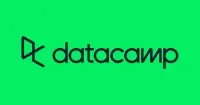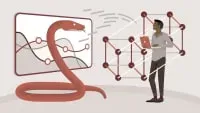
Data Science and Machine Learning with Python - Hands On!

This course provides an introduction to Data Science and Machine Learning with Python. It is designed to help participants gain the skills and knowledge necessary to become successful Data Scientists. With an average salary of $120,000, this course is an excellent opportunity to learn the fundamentals of this lucrative field. Participants will gain hands-on experience with Python and learn how to apply it to real-world problems.▼
Course Feature
![]() Cost:
Cost:
Free Trial
![]() Provider:
Provider:
Skillshare
![]() Certificate:
Certificate:
Paid Certification
![]() Language:
Language:
English
![]() Start Date:
Start Date:
On-Demand
Course Overview
❗The content presented here is sourced directly from Skillshare platform. For comprehensive course details, including enrollment information, simply click on the 'Go to class' link on our website.
Updated in [May 04th, 2023]
(Please note the following content is from the official provider.)
Data Scientists enjoy one of the top-paying jobs, with an average salary of $120,000 according to Glassdoor and Indeed. That's just the average! And it's not just about money - it's interesting work too!
If you've got some programming or scripting experience, this course will teach you the techniques used by real data scientists in the tech industry - and prepare you for a move into this hot career path. This comprehensive course includes
68 lectures
spanning almost
9 hours of video
, and most topics include
hands-on Python code examples
you can use for reference and for practice. I'll draw on
my 9 years of experience at Amazon and IMDb
to guide you through what matters, and what doesn't.
Each concept is introduced in plain English, avoiding confusing mathematical notation and jargon. It's then demonstrated using Python code you can experiment with and build upon, along with notes you can keep for future reference. You won't find academic, deeply mathematical coverage of these algorithms in this course - the focus is on practical understanding and application of them.
The topics in this course come from an analysis of real requirements in data scientist job listings from the biggest tech employers. We'll cover the machine learning and data mining techniques real employers are looking for, including:
Regression analysis
K-Means Clustering
Principal Component Analysis
Train/Test and cross validation
Bayesian Methods
Decision Trees and Random Forests
Multivariate Regression
Multi-Level Models
Support Vector Machines
Reinforcement Learning
Collaborative Filtering
K-Nearest Neighbor
Bias/Variance Tradeoff
Ensemble Learning
Term Frequency / Inverse Document Frequency
Experimental Design and A/B Tests
...and much more! There's also an entire section
on machine learning with Apache Spark
, which lets you scale up these techniques to "big data" analyzed on a computing cluster.
If you're new to Python, don't worry - the course starts with a crash course. If you've done some programming before, you should pick it up quickly. This course shows you how to get set up on Microsoft Windows-based PC's; the sample code will also run on MacOS or Linux desktop systems, but I can't provide OS-specific support for them.
If you're a programmer looking to switch into an exciting new career track, or a data analyst looking to make the transition into the tech industry – this course will teach you the basic techniques used by real-world industry data scientists. I think you'll enjoy it!
(Please note that we obtained the following content based on information that users may want to know, such as skills, applicable scenarios, future development, etc., combined with AI tools, and have been manually reviewed)
What skills and knowledge will you acquire during this course?
This course will provide learners with the skills and knowledge necessary to pursue a career in data science and machine learning. Learners will gain an understanding of topics such as regression analysis, K-Means clustering, principal component analysis, train/test and cross validation, Bayesian methods, decision trees and random forests, multivariate regression, multi-level models, support vector machines, reinforcement learning, collaborative filtering, K-nearest neighbor, bias/variance tradeoff, ensemble learning, term frequency/inverse document frequency, experimental design and A/B tests, and machine learning with Apache Spark. Additionally, learners will receive a crash course in Python for those who are new to the language.
How does this course contribute to professional growth?
This course provides learners with the skills and knowledge necessary to pursue a career in data science and machine learning. It covers a wide range of topics, from basic Python programming to advanced machine learning techniques, such as regression analysis, K-Means clustering, principal component analysis, train/test and cross validation, Bayesian methods, decision trees and random forests, multivariate regression, multi-level models, support vector machines, reinforcement learning, collaborative filtering, K-nearest neighbor, bias/variance tradeoff, ensemble learning, term frequency/inverse document frequency, experimental design and A/B tests, and machine learning with Apache Spark. By completing this course, learners will gain the ability to apply these techniques to real-world problems, which will contribute to their professional growth.
Is this course suitable for preparing further education?
This course is suitable for preparing further education in data science and machine learning with Python. It covers a wide range of topics, from basic Python programming to more advanced topics such as regression analysis, K-Means clustering, principal component analysis, train/test and cross validation, Bayesian methods, decision trees and random forests, multivariate regression, multi-level models, support vector machines, reinforcement learning, collaborative filtering, K-nearest neighbor, bias/variance tradeoff, ensemble learning, term frequency/inverse document frequency, experimental design and A/B tests, and machine learning with Apache Spark. The course also includes a crash course in Python for those who are new to the language. With this comprehensive course, learners will gain the skills and knowledge necessary to pursue a career in data science and machine learning, as well as the ability to apply these techniques to real-world problems.
Pros & Cons
-

Best tutor online
-

Lots of topics
-

Clear and easy to follow
-

Quickly get hands dirty
-

Expert instructor
-

Great instructional materials
-

Need extra videos to understand theory
-

Not enough hands on opportunities
Course Provider






